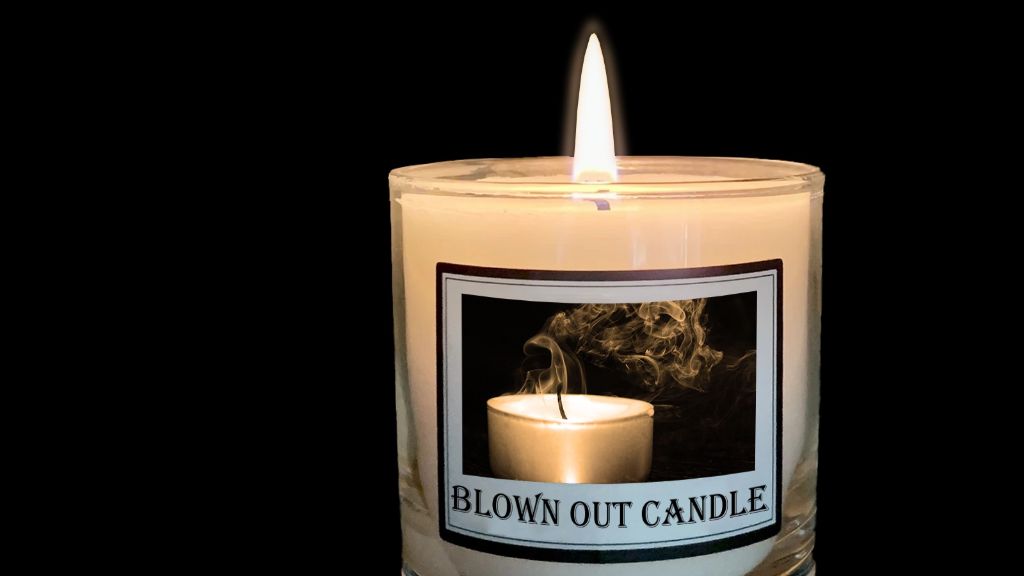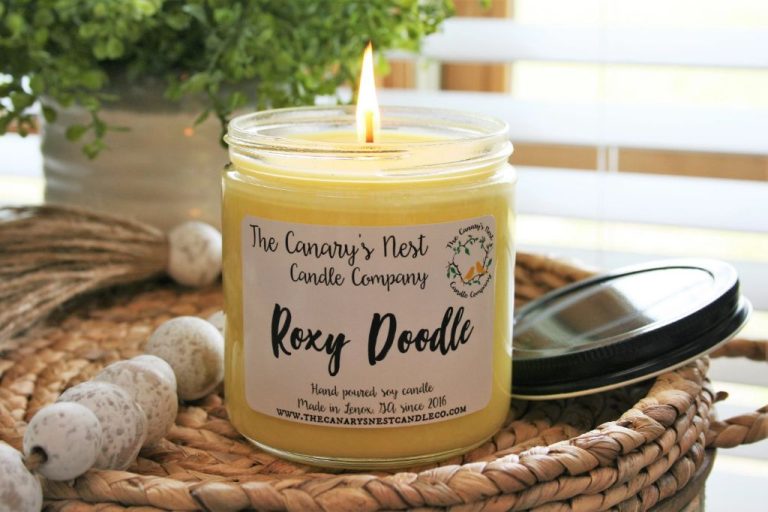Can You Add Too Much Scent To A Candle?
Candles have been a vital source of light and fragrance for thousands of years. The earliest known candles originated in ancient Egypt and China around 3,000 BC, usually made from beeswax or animal fat. Candle making evolved across many cultures over time as new wick and wax materials were discovered. By the 18th century, major advancements allowed candles to be mass produced for everyday use (The history of candle-making and its evolution over time.).

Today, candle making is both an art and a science. Adding fragrance is a key part of creating great smelling candles. However, it’s important to use the right amount. According to industry experts, adding too much fragrance can negatively impact performance and safety.
Recommended Fragrance Load for Candles
The maximum recommended fragrance load for candles and wax melts is generally around 10% (https://nikura.com/blogs/discover/clp-labels-a-complete-guide). This means if you use 1 pound of wax, you would add no more than 1.6 ounces of fragrance oil. The fragrance load is the percentage of fragrance oil by weight compared to the wax.
For container candles, the standard fragrance load is 6-8% (https://aromaenergy.co.uk/blogs/essential-oils/clp-labels-demystified-your-essential-guide-to-compliance). Pillar candles and votives usually use a lower fragrance load of 4-6% since the wax holds the scent better. Gel candles can handle a higher fragrance load of up to 12%.
In general, it’s recommended to stay on the lower end of the fragrance load range for a given candle type. Slowly increase the percentage during testing to find the optimal balance of fragrance strength versus performance.
Impact of Too Much Fragrance
Using too much fragrance oil or essential oil in a candle can lead to a few issues. First, over-fragrancing a candle may prevent it from burning properly. The fragrance oils can interfere with the melt pool and cause tunneling, where the edges of the candle burn but not the center. This leads to wasted wax and uneven burning.
Secondly, an overpowering scent from a candle can be bothersome or even cause headaches for some people. Candles with too much fragrance oil will have an extremely strong aroma that fills the room. While some may enjoy a strong scent, most prefer a more moderate and balanced fragrance from their candles. Too much scent can be overwhelming.
Finally, excess fragrance may trigger allergies or reactions in certain individuals who are sensitive. Just like with perfumes, some people have contact allergies or respiratory issues with heavily fragranced products. Moderation is key to avoid irritating those with scent sensitivities.
Finding the Right Fragrance Balance
When making candles, finding the right balance of fragrance is key. Testing out different fragrance load percentages is important to determine the ideal amount for your specific candle. An appropriate fragrance load can range anywhere from 4-15%, depending on factors like candle size and wax type.
For example, a large pillar or container candle may only need 4-8% fragrance, while smaller votives and tarts can handle upwards of 15% fragrance oil. Soy wax typically requires more fragrance than paraffin wax.
It’s also important to consider personal preference regarding scent strength. Some people enjoy very strong scented candles, while others prefer a lighter fragrance. Testing 1-2% fragrance increments will help determine the sweet spot. Keep notes on the specific oil percentages and how the scent projections compare.
Finding the right balance requires some trial and error. But taking the time to test different fragrance loads will ensure your homemade candles have an optimal scent throw without being overpowering.
Fragrance Oils vs Essential Oils
Fragrance oils and essential oils have different properties and performance when used in candle making. Fragrance oils are blended artificial scents designed specifically for candle making. They tend to be stronger smelling and more cost effective than essential oils. Fragrance oils hold their scent when burned and have excellent cold throw as the candle cures. Popular fragrance oil scents include apple cinnamon, pumpkin spice, and vanilla bean.
Essential oils are from natural plant sources like flowers, fruits, roots or bark. They can provide therapeutic aromatherapy benefits. However, essential oils are more volatile, resulting in less hot throw or scent when the candle is burned. Blending essential oils is recommended to create a stronger, more balanced fragrance. Top essential oil picks for candles are lavender, lemon and peppermint. When combining fragrance and essential oils, start with a base of 2 parts fragrance oil to 1 part essential oil until the desired aroma is achieved.
According to Lavender Backyard, “Fragrance oils tend to have stronger scents than essential oils, which can be beneficial for those who want a more powerful fragrance in their candle.”
Storing Highly Fragranced Candles
When storing candles with strong scents, it’s important to take measures to prevent the fragrances from causing cross-contamination. The potent aromas can transfer to other items and even to the wax of other candles not meant to be strongly scented.
To avoid fragrance transfer, highly scented candles should be kept in airtight containers rather than left exposed. Glass jars with tight-fitting lids or candle sleeves designed for storage work well. Plastic containers are also an option as long as they seal securely. Metal tins make suitable containment too. Just be sure to keep the lid on to block any escaping scent.
Additionally, scented candles should be stored separately from non-fragranced items. Don’t mix them in with linens, clothing, or unscented products or the powerful smells can be absorbed. It’s advisable to designate a specific area just for fragranced candles to eliminate cross-contamination.
With time, the scent intensity of a candle will diminish so storage containers also help prolong the fragrance. Keeping candles in a cool, dark place helps prevent the aromatic oils from evaporating too quickly. Storing in the refrigerator is an option but not required. Just be wary of moisture accumulation.
Wick Selection for Strong Scents
When making candles with a high fragrance load, it’s important to choose the right wick to prevent issues like tunneling. Thicker wicks that are larger in diameter are better suited for strongly scented candles. The thicker wick will burn hotter to allow the wax pool to reach the edges of the container. With too thin of a wick, the wax pool may only reach halfway and create a tunnel down the center.
Testing different wick types and sizes is key when formulating a new highly fragranced candle. Start with a larger wick and observe how the candle burns. If tunneling occurs, increase the wick size until an even wax pool is achieved from edge to edge. Every wax and fragrance oil combination is a bit different, so testing is critical. Keep detailed notes on which wicks burn best for each particular candle recipe.
Safety Tips
When making and burning candles, proper safety precautions should always be taken. Proper ventilation is crucial when pouring candles to allow wax vapors to dissipate. Work in a well-ventilated area away from any open flames or spark sources according to Candle Safety Rules. When burning candles, never leave them unattended and keep them away from drafts or vents that can cause rapid, uneven burning. Also be sure to keep lit candles up high, out of reach of children and pets.
Those with scent sensitivities or allergies should be aware that some fragrance oils can trigger reactions. It’s best to avoid highly fragranced candles or burn candles only for short periods if you experience any breathing issues or headaches from scented products according to Important Safety Tips to Remember When Scented Candles. Test how you react to a candle scent in a well-ventilated room before burning for longer periods.
Popular Strong Scent Combinations
Certain fragrance combinations create complex, intense scent profiles when blended together in candles. Here are some popular strong scent blends:
Citrus and Floral: Combining bright citrus oils like lemon, lime, grapefruit or orange with heady florals like jasmine, gardenia or tuberose makes for an uplifting, vibrant candle. The citrus adds a fresh zing while the florals provide depth and sweetness.
Spice and Wood: Warm, spicy scents such as cinnamon, clove and cardamom blended with woody notes like cedarwood, sandalwood or oud create an exotic, mystical aroma. The spices smell invigorating while the woods provide an earthy, grounded base.
Fruity and Musk: Mixing juicy fruit oils such as peach, mango, apple or pear with musky base notes like cashmere, amber or vanilla results in gourmand sweetness. The fruits offer ripeness and tartness while the musk adds creaminess.
Mint and Herbal: Combining stimulating mint essential oils with herbal lavender, eucalyptus, rosemary or thyme produces an awakening clarity. The mint provides a clean crispness while the herbs contribute a soothing botanical element.
Conclusion
While highly fragranced candles can be tempting, it’s important not to overdo it with fragrance oils. Too much scent can lead to issues with burning, safety hazards, and an overwhelming experience for the user. The key is finding the right balance of fragrance – enough to create a pleasant ambiance, but not so much that it becomes overpowering.
When making strongly scented candles, recommended best practices include:
– Keeping total fragrance load under 12%
– Using wide container candles to allow fragrance to diffuse
– Testing wick types to find the optimal burn for the fragrance
– Avoiding burning for more than 4 hours at a time
– Giving the candle ample cure time before burning
– Storing in a cool, dry place to help fragrance last
– Exercising caution and good ventilation when burning
With some care taken during the formulation and burning process, it is possible to create highly fragranced candles that are safe and provide a delightful scent experience.





